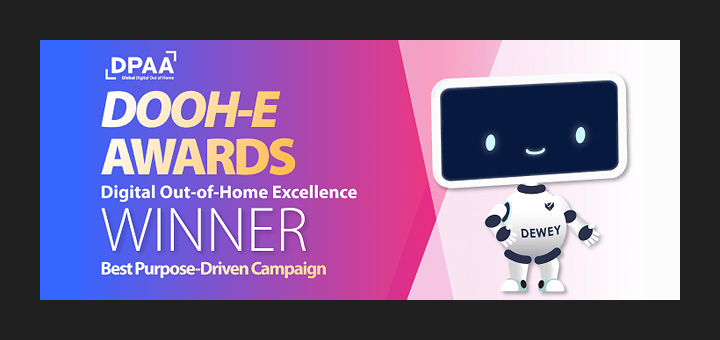Learn from cable's mistakes: The promising ad-supported streaming future
Since ads are here to stay (especially for the platforms that let people pay more to avoid them), here’s some advice on how streaming platforms and advertisers can collectively bring value to consumers and each other.
µţłŰĚý
Every consumer knows the feeling of scrolling through their smart TVs or across streaming platforms to find something to watch, doing the mental calculation of how much they’re paying for each platform. And now almost all of those platforms include ads—unless you pay for a premium tier. It’s enough to make someone wonder, “I quit cable for this?”
Netflix and Amazon  to their streaming platforms. Fox, Disney, and Warner Brothers  a streaming sports bundle they hope will capture the audience that lives and dies by sports. What is old is new again. The streaming platforms that were set to transform cable have seemingly replaced it with a cable-like product.
As we contemplate a streaming environment that mimics cable, it’s important to remember why people love streaming so much. People want complete control over what they watch and when, and are willing to pay a monthly fee for that power. So, the proliferation of new platforms and introducing ads can make some consumers wonder if they’re stricken with a case of deja vu.
Let’s be real: Undoubtedly, some people are paying as much or more for streaming as they did for cable, and they still have to watch ads. The future is the past.
Since ads are here to stay (especially for the platforms that let people pay more to avoid them), here’s some advice on how streaming platforms and advertisers can collectively bring value to consumers and each other.
ADVICE FOR PLATFORMS
Don’t Overburden The Ad Load
Linear TV watchers may be older on average, but they aren’t dumb. They noticed ad loads go from 24 minutes of content and six ads to 20-10 seemingly overnight. Platforms that are already making money from subscriptions need to avoid killing the golden goose by running too many ads.
Don’t Overpromise Delivery
Streamers, in theory, should be able to accurately estimate their viewership figures and, therefore, sell what they can deliver. Yet, , Netflix’s first foray into advertising only delivered 80% of the expected audience.
Digiday quoted an advertising executive who claimed Netflix returned some money for unfulfilled campaigns. Platforms should not confuse refunding money or makegoods with being all square with advertisers. Netflix has plenty of money, so they’ll be fine, but what about the advertisers who have to go back to their executives and tell them they’re not going to make their sales goals because they underestimated how many people watched Is It Cake?
Don’t Change Your Content Strategy
Streamers seemingly offered quality content divorced from the treadmill of ad-supported viewership. Running ads should be supplemental, not the main revenue stream—especially if you are charging viewers on a monthly basis for your service. Don’t drop prestige for low-budget reality programming.
ADVICE FOR ADVERTISERS
While consumers are—let’s be honest—not super excited about ads coming to their favorite streaming platforms, advertisers are excited about reaching the much younger streaming audience. Eighty-five percent of viewers  say they stream content on a weekly basis, making streaming a powerful medium for any brand looking to reach younger audiences.
Here’s what you should keep in mind when targeting new streaming opportunities:
Learn To Love Skippable Ads
Very few people watch ads until the very end. Shocking, I know. While I know advertisers like to live in a world where people are hanging on their every word, you have to earn that attention. Skipping happens; it’s reality.
But skippable ads produce a ton of valuable information that you don’t get from, say, ads on linear broadcasts. If your ad is skipped, it means someone is in the room and paying attention (up until the moment they said they didn’t want to pay attention anymore). It’s a good reminder of how crucial it is to get across your brand message early in the ad.
However, if nearly everyone is skipping your ad, it is still valuable feedback—it may be time for a new creative or targeting approach.
Embrace The Lean-Back Experience
While CTV does offer opportunities for performance marketing, you’re still likely to reach audiences who are trying to get away from the world for stimulating or relaxing entertainment. Streaming offers huge opportunities for brand building and other top-of-the-funnel activities. Think of streaming as a full-funnel opportunity.
Offer A Value Exchange
Attention is the scarcest resource these days, especially in streaming environments where ads are newer and less expected or welcome. Even viewers of free, ad-supported streaming television (FAST) networks expect minimal disruption—think 0:05s or 0:15s versus 0:30s—and expect something in exchange for their attention. That something could be tangible like a discount code or offer, or a “surprise and delight” moment.
In other words, don’t be boring. Embrace the creativity that you have previously used for linear advertising.
ULTIMATELY, AD-SUPPORTED STREAMING IS HERE TO STAY
Consumers will eventually come around to ads being added to their streaming platforms, just as they have in other spaces. It can’t be worse than seeing ads in bathrooms.
But advertisers and platforms must work together to ensure the value they’re providing keeps consumers happy. Advertisers and platforms should work together to make sure ad-supported streaming learns from the mistakes of cable and offers the best overall value to consumers.




